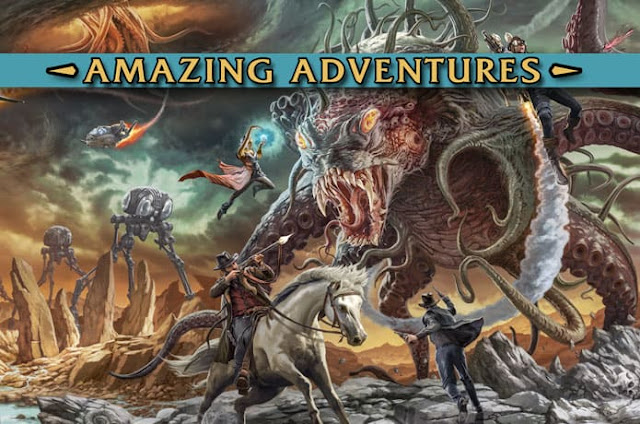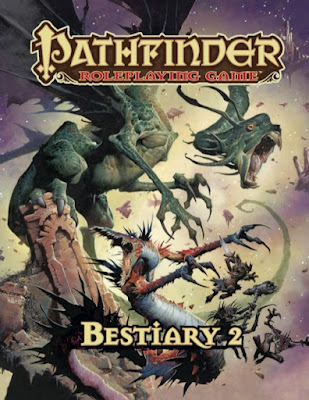We move right away to AD&D Second Edition with the Realms of Terror boxed set. For this review I am going to feature the original 1990 Boxed set, the PDF and Print on Demand options from DriveThruRPG
Ravenloft: Realm of Terror (1990)
Boxed set. 144-page rule book (B&W), 4 full color maps, 24 full color sheets featuring various families and castles of the Demi-plane.
by Bruce Nesmith with Andria Hayday. Art by Clyde Caldwell and Stephen Fabian.
PDF and PoD is a combined product; color and B&W art, 168 pages.
It is really hard to quantify exactly what this boxed set meant to me at the time of its release. This came out in June 1990. I was 21, living in my university town year round now, getting ready for grad school. I can remember sitting at my desk in my apartment reading over this set many times.
While even at the time I knew that trying to force-feed Gothic Horror into AD&D was a tall order, I still loved every bit of it. It was the closest I had seen up to that point that captured the play style I really wanted. D&D + Horror was pretty much everything I was doing and this was a new frontier for me.
Ravenloft was a boxed set campaign world at the height of AD&D 2nd Edition's foray into boxed set campaign worlds. It was one of the game's great strengths and, ultimately, one of the reasons for TSR's undoing, but that is not our topic today.
The Demi-plane of Ravenloft was a Twilight Zone-like place where the truly evil were captured and put off into a prison of their own with others, including what seems like many innocents. Something that dominated the RAVENLOFT-L lists back in the day. It was a horror anthology writ large. It was everything I wanted in a campaign world.
Realm of Terror Book
The Realm of Terror book is a 144-page guide to this new world.
Chapter: From Gothic Roots
This covers what this book is trying to do with nods both to the original Ravenloft Adventures and to the Gothic Horror genre. A very quick introduction to Gothic Horror.
Chapter II: The Demiplane of Dread
Covers the basics. What is this demiplane, how did it come into being, what connection does it have to Strahd Von Zarovich. If reading this you think Twilight Zone, Hotel California or even the old Roach Motel, then you would be forgiven.
Of note here, for me at least, is a timeline of the major events in the Demiplane.
The Mists of Ravenloft, a feature of the first module and brought back for the second, is all important here. They can be summoned and partially controlled by the Domains' Dark Lords. They can also reach into the Prime Material and seek out other souls. Even bringing in entire new Domains with it, or leaving traces in the Prime Material.
Chapter III: The Reshaping of Characters
The big assumption here is that characters would be coming from somewhere else. This allowed for the various "Weekend in Hell" scenarios that you could do with Ravenloft. Certainly the first two adventures felt like this as did X2 Castle Amber. Thus characters will have some alterations. Clerical abilities such as Turning Undead do not work as well as it used too. Magic is always a bit wonky. Demihumans are always looked at with suspicion. And evil acts will cause the character to make Dark Powers checks. If they fail they become more and more attached to the Demiplane and can never leave.
Chapter IV: Fear and Horror Checks
Ok. I will be honest this is one of my favorites things about Ravenloft and a mechanic I ported back over to Vanilla D&D many times. It works best here though.
Lots of text is given over to how to invoke a fearful, spooky atmosphere. But lets be honest, D&D Characters AND D&D Players can be a bit of a jaded bunch. Compare the moves "Alien" and "Aliens" and see the difference horror has on the unaware and on seasoned warriors. The Fear and Horror checks help this mood along.
Chapter V: Werebeasts and Vampires
The MVPs of Gothic Horror (along with Ghosts), if characters get special hinderances, these guys get special bonuses. Most importantly we get the Vampire Powers due to age a year before Vampire: The Masquerade did it. This is also something I ported back to D&D. Though I will admit, it does lessen the impact that this campaign setting has when I do that.
Chapter VI: Curses
An ancient cursed family? A scientist (er...Naturalist) cursed to discover a cure that might be worse than the aliment? Undead, Lycanthropes, the restless Vampire? What is Gothic Horror without curses. You would think with all this they would have given us some proper witches, but that comes later.
Chapter VII: Gypsies
Ok, you know that disclaimer on DriveThruRPG that many of the old guard whinge about? It is for things like this. Did the authors mean to disparage people of Romany descent? Of course not. They were using the common term as it was used when this printed. That doesn't mean the name is not offensive to some. We have to respect that.
In newer versions of Ravenloft these have been replaced with Vistani. There are still some issues with that yes, but it is beyond the scope of this review to go into that.
What the chapter does cover are a people that seem to have some sort of special relationship to the land and to the Mists.
Chapter VIII: Telling the Future
The I6: Ravenloft adventure casts a long shadow over this product. Fortune Telling is covered here. Typically with regular playing cards, but we used a Rider-Waite Tarot deck.
Chapter IX: Spells in Ravenloft and Chapter X: Magic Items in Ravenloft
We mentioned in Chapter III that characters have changes, well here are various spells and magic items from AD&D 2nd Edition and how they are changed.
These characters, though while longer than the previous ones, could have been combined.
Chapter XI: Lands of the Core and Chapter XII: Islands of Terror
Ahh! Now we are getting to the world proper. This chapter describes the various lands/countries of teh Core Domain with Barovia as the beating, black heart. Each land is covered along with who their Darklord is, what the population is made up of and what characters can expect. Each land also has a section on how the Darklord can close their borders to keep people out or in. The Darklords themselves can never leave their lands.
The Islands of Terror are largely disconnected from the Core, but can be reached via the Mists.
Nearly* every AD&D 2nd Ed world is represented here, some more than once.
(*I'll deal with this in another post.)
These two chapters are the largest.
Chapter XIII: The Who's Doomed of Ravenloft
Were the chapters padded to make sure this one was Chapter 13? Maybe.
This covers the Darklords and important NPCs, both good and evil, you can encounter in Ravenloft. There are a lot of archetypical (some say stereotypical) villians of Gothic Horror. We get Dracula for example in both his human (Vlad Drakov) and vampire (Strahd) personas. Ghosts, Liches, were creatures, poisoners, the lot.
The Ravenloft adventure really sold the idea that the monster at the end, something later known as the "Big Bad," should really be a developed character. This takes that to logical next steps and makes all the Darklords detailed characters. This is a good thing really.
Chapter XIV: Bloodlines
Covers the various family trees of the folks of Ravenloft.
Chapter XV: Techniques of Terror (and Adventure Ideas)
More DM advice on how to run a horror game.
The book ends with seven new AD&D Monstrous Compendium style monster pages.
The Boxed Set Contents
The boxed set also comes with 4 Poster sized maps; 1 of the Core, 1 of the Islands of Terror, and 2 of the various villages and towns. There is a clear plastic hex-grid to lay over the top.
There are 16 full color cards (8.5" x 11") of the various important castles and homes in Ravenloft.
Five cards of the various important families with details on the back.
And three with information usable by players and DMs.
The Print on Demand Copy
The Print on Demand copy is great, still quite clear. ALL of the material from the Boxed set is here. And by all I do mean all the maps and even the clear hex grid (no longer clear obviously). It does limit the utility of the maps, but since you can opt for the PDFs at the same time you can print out the maps and cards.
I was very active in the Ravenloft fandom scene online back in the 1990s. I was a very active member of the RAVENLOFT-L email list back then and then later on the various Usenet groups.
Some of those people I still talk too today.
Ravenloft WAS 1990s AD&D for me. As long as I stayed in my dark little corner of the mists, I didn't care about what the other worlds did or didn't do. I still paid attention to Mystara and a little bit of Greyhawk, but the rest were so much noise to me. And my experiences were not unique.
I had pretty much given up on D&D, having moved on over to other games, but I had kept a lot of my Ravenloft stuff. Sadly, I did unload a huge bulk of it all in the early 2000s. I have since been able to buy it all back on PDF. Less space in my home, and less likely I'll decide to sell it all again.
I have a good example of this coming up next.
But I am going to say this, after so many decades away from the AD&D 2nd Ed version of Ravenloft, it is nice to be "home" once again.



















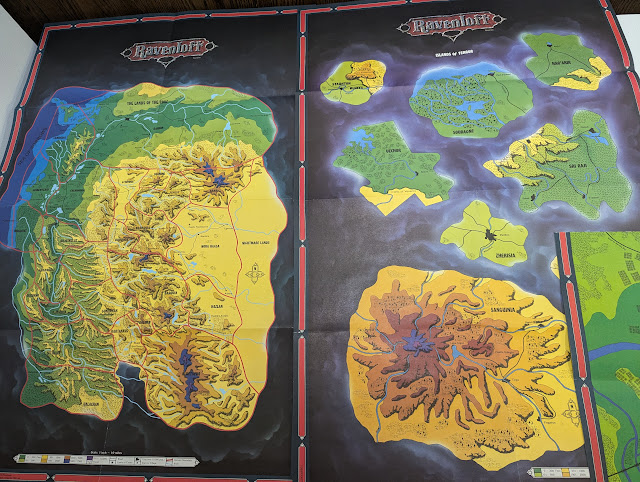



















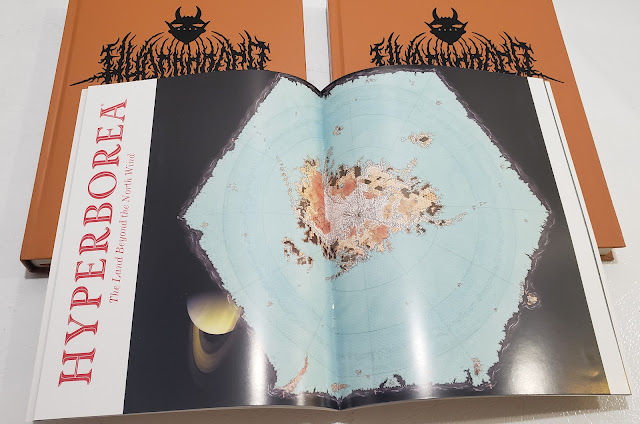

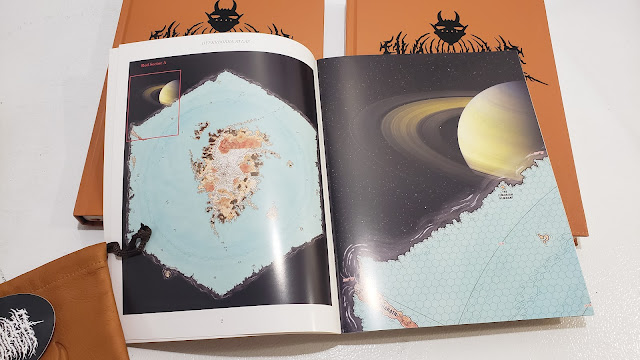
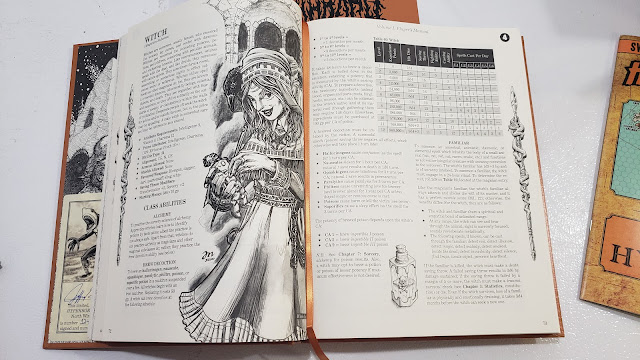
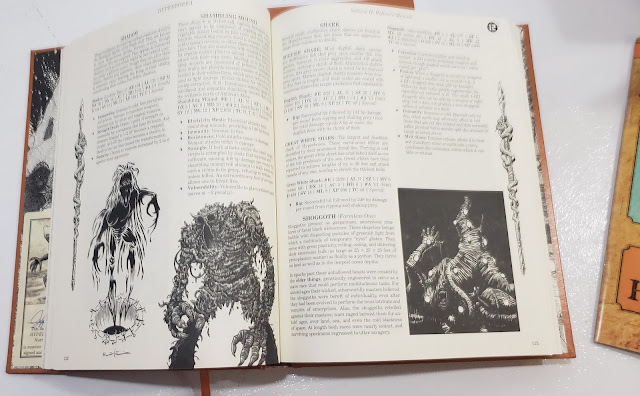
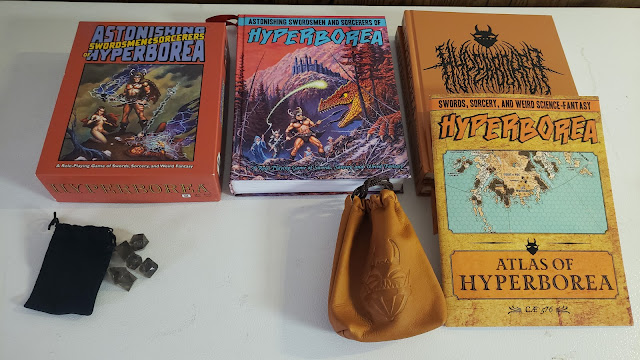


.jpg)
